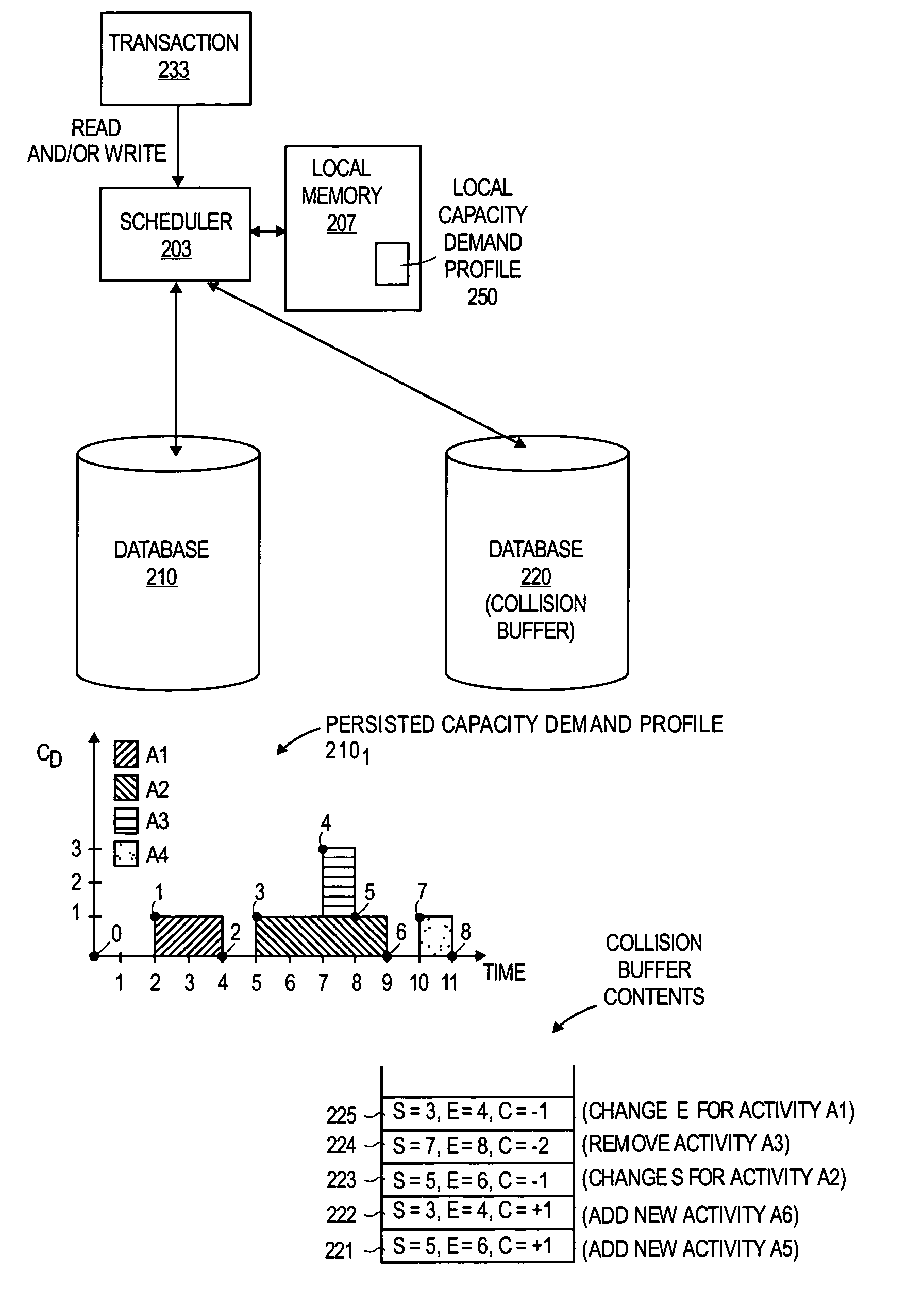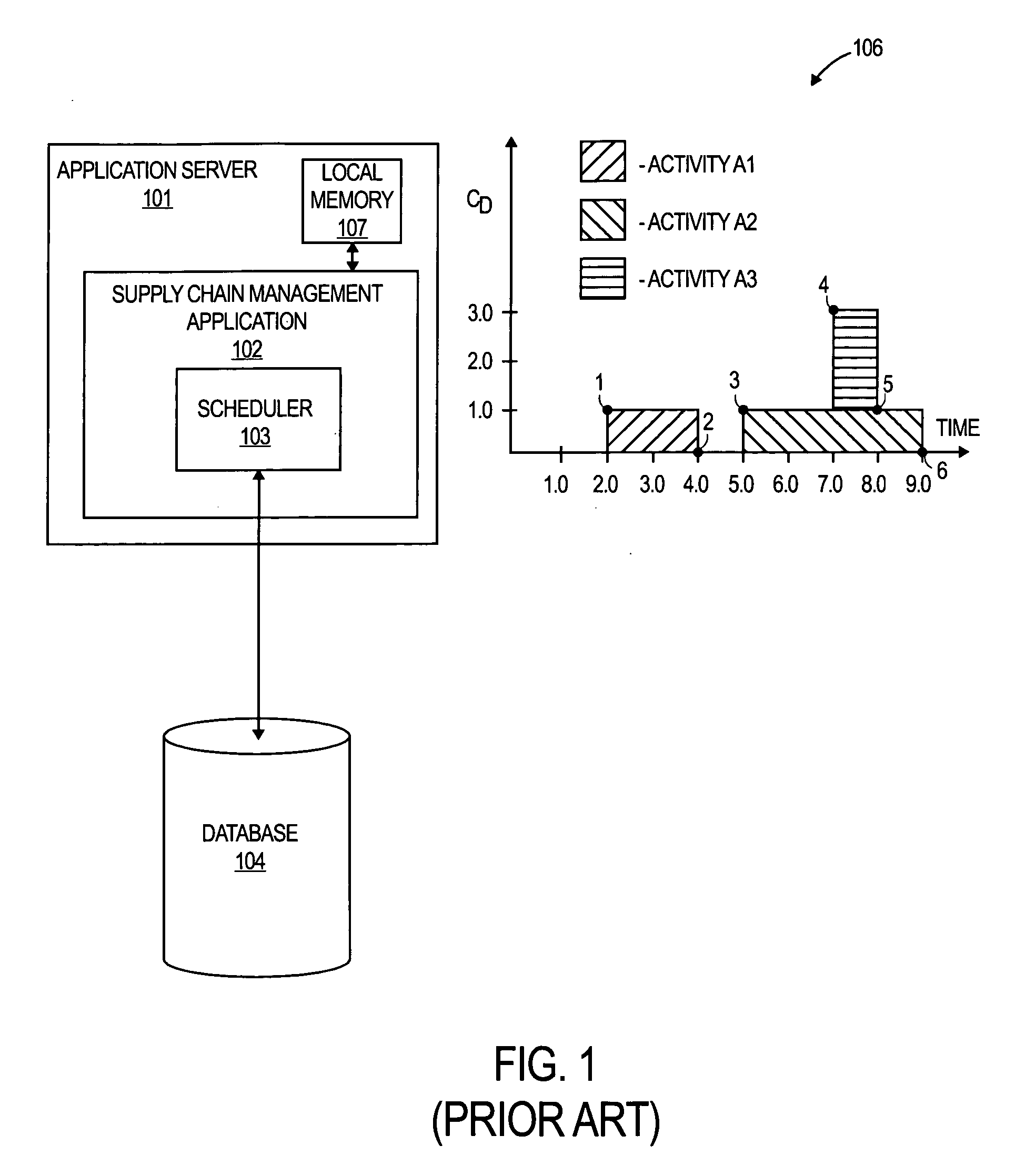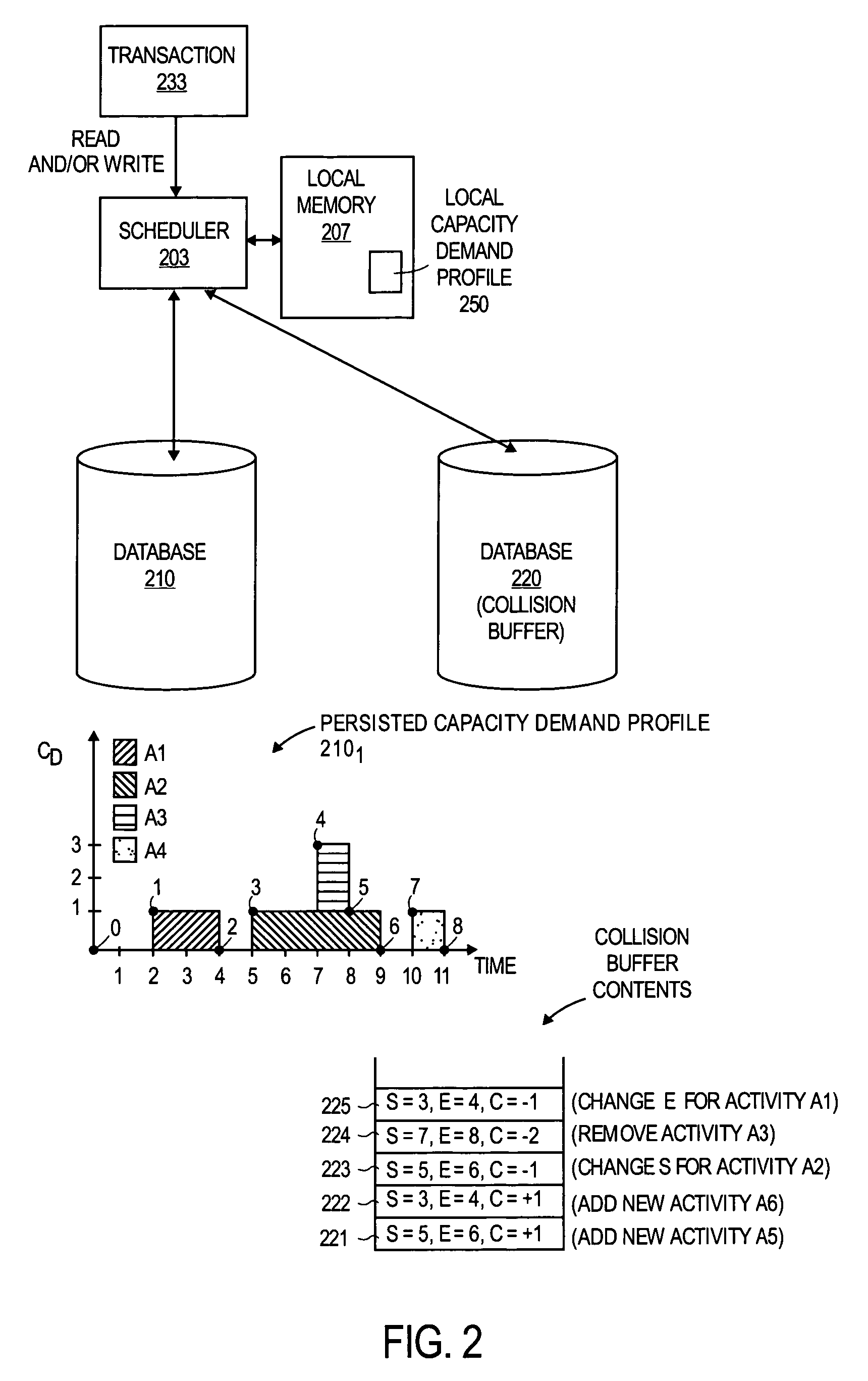Dynamic capacity demand profile construction with a persisted capacity demand profile and a collision buffer
a dynamic capacity demand and profile technology, applied in the field of information systems, can solve problems such as difficult scaling
- Summary
- Abstract
- Description
- Claims
- Application Information
AI Technical Summary
Benefits of technology
Problems solved by technology
Method used
Image
Examples
Embodiment Construction
Overview
[0030] Recall from the discussion in the Background that a problem with the prior art system of FIG. 1 is that it does not easily support the continued execution of multiple transactions that simultaneously desire the use of the same data from database 104. FIG. 2, by contrast, shows an improved scheduling architecture. According to the improved architecture of FIG. 2, the contents 221 through 225 of a collision buffer 220 represent the ability of the system of FIG. 2 to allow “locked out” transactions to continue their execution without being delayed or dropped.
[0031] As will be described in more detail below, “locked out” transactions will load into the collision buffer 220 desired change(s) to a resource's locked, persisted capacity demand profile that reflect the locked out transactions' desire to add, remove or change specific scheduled activities. These locked out transactions then continue their operation “as if” these changes were successfully implemented. The resu...
PUM
 Login to View More
Login to View More Abstract
Description
Claims
Application Information
 Login to View More
Login to View More - R&D
- Intellectual Property
- Life Sciences
- Materials
- Tech Scout
- Unparalleled Data Quality
- Higher Quality Content
- 60% Fewer Hallucinations
Browse by: Latest US Patents, China's latest patents, Technical Efficacy Thesaurus, Application Domain, Technology Topic, Popular Technical Reports.
© 2025 PatSnap. All rights reserved.Legal|Privacy policy|Modern Slavery Act Transparency Statement|Sitemap|About US| Contact US: help@patsnap.com



